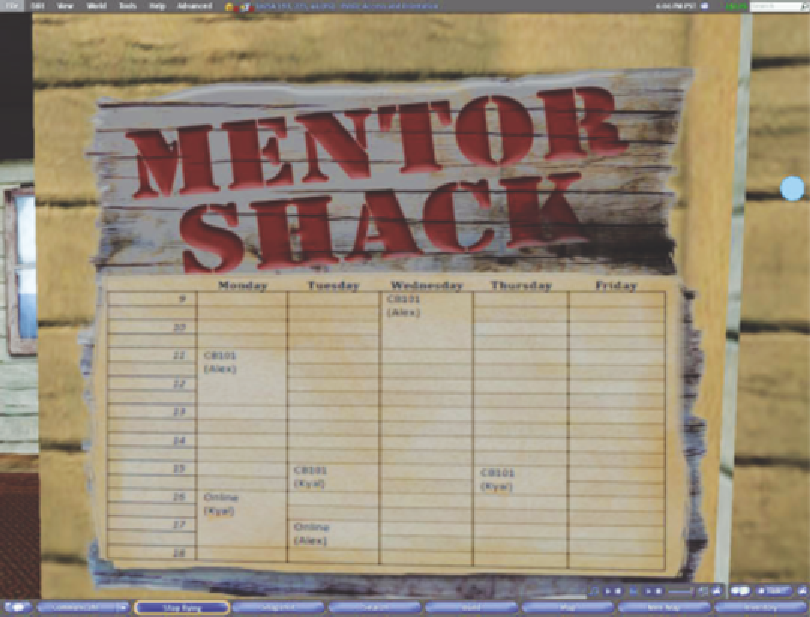Graphics Programs Reference
In-Depth Information
Figure 3. Sign outside mentor shack listing scheduled times for help in Second Life
discussed the convergence of media and the dif-
ference between broadcasting in a virtual world
such as
Second Life
and broadcasting in 'real
life'. Students were not required to use
Second
Life
formally in the course, however they were
encouraged to explore the environment and to
consider undertaking their research project in
Second Life
if they were interested in 3D virtual
environments. The aim was to use
Second Life
as
a means for introducing students to the meaning
of convergence of media, and to provide students
with a flexible environment where they could
meet with each other and the academic staff dur-
ing formal help sessions, if they wanted to attend
sessions off-campus.
Students undertook three assignments over the
course of the thirteen week semester. The first
assignment required them to develop a research
proposal based on a topic of their choice focusing
on a particular media format. In the second as-
signment students undertook a simple research
study based on their chosen topic and in the final
assignment students published their findings to
the Web. Of the 148 students enrolled in the course,
only one student chose to investigate a topic fo-
cusing on 3D virtual worlds. The majority of
students chose topics investigating film, print or
Web design.
Design for Interactive media
Students who are majoring in either animation or
interactive media are introduced to games design
in the second year of their program thorough the
course
Design for Interactive Media (DIM
). There
is an emphasis on problem solving, creativity,

Search WWH ::

Custom Search